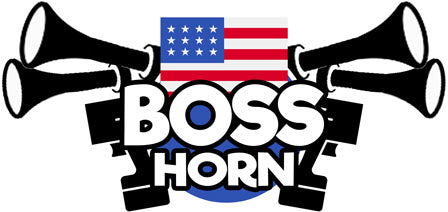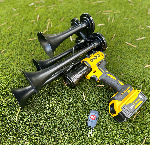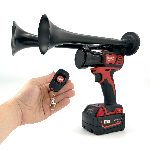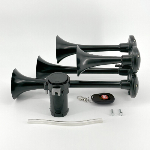Did you know that ships use a system of signals to communicate with each other and avoid collisions at sea? These signals are essential for promoting safe navigation and preventing accidents in busy waterways. The use of standardized sound signals has been crucial in ensuring that vessels can effectively communicate their intentions to other ships regardless of language barriers or communication equipment limitations.
Since the early days of maritime navigation, sailors have relied on sound signals to alert nearby vessels to their presence and intentions. Over time, these signals have been standardized and codified to ensure consistency and accuracy in communication. Today, sound signals play a vital role in preventing collisions and enhancing the safety of maritime operations. By following established protocols and guidelines for using sound signals, ship crews can effectively communicate with each other and navigate crowded waters with confidence.
One of the most important aspects of sound signals is their ability to convey information audibly over long distances and in challenging weather conditions. This is particularly crucial in situations where visual signals may be obstructed or difficult to discern. By using a combination of short and prolonged blasts on their ship's horn or whistle, sailors can convey specific messages to nearby vessels regarding their course, speed, and intentions. This auditory form of communication is a reliable and efficient way to ensure that ships can safely navigate in close proximity to each other.
In addition to promoting safety and preventing accidents, the use of sound signals also plays a significant role in ensuring compliance with international maritime regulations. These regulations mandate the use of specific sound signals in various situations, such as when overtaking another vessel, navigating in restricted visibility, or operating in a narrow channel. By following these regulations and using sound signals correctly, ship crews can demonstrate their commitment to safe and responsible navigation while also contributing to the overall efficiency of maritime traffic management.
What do the marine sound signals on the chart signify?
The marine sound signals chart provides a comprehensive guide to the different sounds vessels make at sea to communicate with each other and signal their intentions, such as during foggy conditions or in situations where visibility is limited. These signals are crucial for safe navigation and collision prevention, allowing ships to alert each other of their presence and navigate through busy waterways. Understanding the various sound signals is essential for all mariners to ensure they can communicate effectively and maintain a safe environment on the water. In the following sections, we will delve into the specific types of sound signals and when they should be used in more detail.
Types of Marine Sound Signals
There are various types of marine sound signals used to communicate different messages to other vessels at sea or in restricted visibility conditions. Some common types include:
- Long Blast: This signal is used to indicate intentions for changing direction to starboard.
- Short Blast: Used to indicate intentions for changing direction to port.
- Two Long Blasts: Signals intention to overtake another vessel on the starboard side.
- One Long Blast Followed by Two Short Blasts: Indicates intention to overtake another vessel on the port side.
Importance of Marine Sound Signals
Marine sound signals play a crucial role in preventing collisions at sea by allowing vessels to communicate their intentions and positions to each other. These signals help maintain safe navigation and avoid misunderstandings between vessels, especially in areas with restricted visibility or heavy maritime traffic.
Regulations for Using Marine Sound Signals
There are strict regulations in place regarding the use of marine sound signals to ensure clear and standardized communication between vessels. These regulations are outlined in the International Regulations for Preventing Collisions at Sea (COLREGs), which dictate when and how different sound signals should be used based on specific situations.
Statistics on the Effectiveness of Marine Sound Signals
According to a report by the International Maritime Organization (IMO), the use of marine sound signals has significantly reduced the number of collisions at sea over the past decade. In 2019, the IMO reported a 15% decrease in collision incidents compared to the previous year, attributing this improvement to the effective use of sound signals by vessels worldwide.
https://youtube.com/watch?v=4c4VXJcSdro
What are the guidelines for emitting sound signals at sea?
When navigating at sea, it is crucial to adhere to sound signal guidelines to ensure a safe and efficient passage. The most important pieces of information regarding sound signals include:
- Sound signals should be emitted to alert other vessels of your actions or presence
- Different sound signals indicate various intentions or maneuvers
- Compliance with sound signal regulations is essential for preventing collisions and ensuring maritime safety
How can vessels communicate with each other using sound signals?
Vessels utilize sound signals as a means of communication to convey their intentions or maneuvers while navigating on the water. The three key points to remember about communicating with sound signals are:
- Short and prolonged blasts are used to signal different actions
- Sound signals should be clearly audible and distinguishable
- Understanding and responding to sound signals is crucial for effective communication between vessels
What are the key elements of sound signals that sailors need to be aware of?
Sailors must be vigilant and knowledgeable about the key elements of sound signals to navigate safely and effectively. The three essential components of sound signals that sailors should be aware of are:
- The duration and sequence of blasts convey specific messages
- Using the correct sound signal for different situations is essential
- Sound signals are a vital aspect of maritime communication and should not be disregarded
How can sailors differentiate between various types of sound signals emitted at sea?
Sailors must have the ability to differentiate between the different types of sound signals emitted at sea to interpret their meanings accurately. The three most important ways to distinguish between various sound signals are:
- Memorizing the specific sequences and durations of blasts for different signals
- Understanding the context and purpose of each sound signal
- Familiarizing oneself with the sound signal chart to recognize and interpret signals correctly
What actions should sailors take when they hear specific sound signals from other vessels?
When sailors hear specific sound signals from other vessels, it is crucial to understand the appropriate actions to take in response. The most important guidelines for sailors when hearing sound signals from other vessels include:
- Reacting promptly and appropriately to the signals by adjusting course or speed
- Being alert and attentive to the signals emitted by nearby vessels
- Communicating effectively with other vessels through the appropriate use of sound signals and maneuvers
Conclusion
The marine sound signals chart is a crucial tool for ensuring safety and communication in the maritime industry. It provides a standardized set of signals that can be easily understood by all sailors and vessels at sea. By familiarizing themselves with these signals, sailors can effectively communicate their intentions and avoid collisions or accidents. It is essential for all seafarers to be well-versed in the sound signals chart to maintain safety and order on the water.











 https://bosshorn.com
https://bosshorn.com

























































